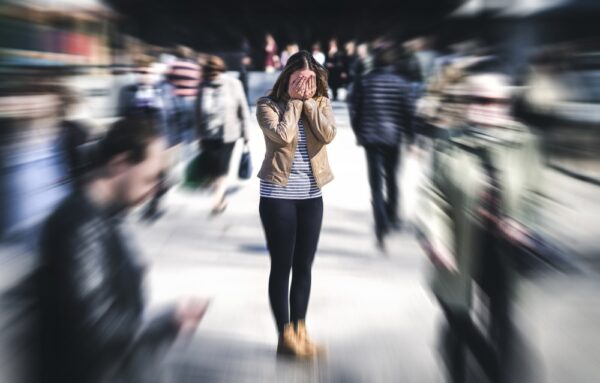
Agoraphobia is anxiety and fear, emotions that everyone experiences in their life. These are completely natural emotions, but for some people, the feeling of discomfort can cause significant anxiety. Anxiety disorders are very serious and should not be underestimated. Agoraphobia is also included in the group of anxiety disorders. What is it? Where does it come from? How does it manifest and how can it be treated?
WHAT IS AGORAPHOBIA
Agoraphobia is a type of phobia that belongs to the group of anxiety disorders. It is an abnormal fear of being in an open space. A person with agoraphobia is afraid that they will have a panic attack in such a place. The person affected by agoraphobia may have serious problems leaving their home due to this fear, even if it is for a short trip or a short distance. They may also have difficulty with shopping or traveling by train or public transportation.
On the other hand, one may be afraid of being completely alone – in such a person, there is always a strong conviction that they may experience a strong panic attack at any moment and no one will help them at that time.
AGORAPHOBIA – CAUSES
Unfortunately, scientists have not been able to determine exactly what causes agoraphobia in people. However, each case should be assessed individually.
-There are indications that agoraphobia may have a genetic basis and is associated with the inheritance of certain traits or behaviors from relatives. This theory is also supported by the fact that people who already have someone in their family struggling with agoraphobia may also suffer from it.
-Psychological factors are also cited as possible causes, and there can be many of them. In fact, anything that can negatively affect your mental health can lead to the development of agoraphobia.
-Drug and alcohol addiction can contribute to the development of agoraphobia. It may also be a result of other disorders, including generalized anxiety disorder or obsessive-compulsive disorder.
-It cannot be ruled out that agoraphobia has its origins in severe traumatic experiences. It can develop as a result of physical or psychological violence.
AGORAPHOBIA – SYMPTOMS
Agoraphobia is a very severe anxiety disorder that can seriously hinder and even disable normal functioning. If you suspect you have agoraphobia, self-observation is the best approach. If you feel intense fear and anxiety about being alone in a crowded place – on public transport, in a shopping center or on the street, or if you are afraid of open spaces and even leaving the house is difficult and unsettling for you – it may be agoraphobia.
People with agoraphobia develop severe anxiety and associated physiological symptoms – sweating, rapid heartbeat, dizziness, headaches, and even fainting. What is completely normal for other people and does not receive much attention can be a source of great fear for people with agoraphobia. Somatic symptoms only compound this fear. For example, a rapid heartbeat in a stressful situation can be perceived as an impending heart attack, which only further scares the person and worsens their condition.
Agoraphobia has a very negative impact on one’s entire life. A person with agoraphobia increasingly struggles with social situations, neglecting relationships with others and experiencing more and more difficulties in the professional sphere. Over time, it becomes increasingly difficult for them to initiate or maintain relationships.
AGORAPHOBIA – TREATMENT
Agoraphobia is too serious a problem to be underestimated. The best solution in this case is to seek the help of a specialist, although support from loved ones can also be very beneficial.
Cognitive-behavioral therapy is most commonly used to treat agoraphobia. It also produces the best results in the fight against anxiety disorders. The combination of cognitive and behavioral techniques gives the patient a chance to understand the nature of their anxiety. This type of panic therapy typically consists of ten to fifteen sessions, on average once a week.
The start of therapy is very beneficial. The patient has the opportunity to learn more about their fears and the mechanisms responsible for them. They learn to recognize anxiety and its symptoms and understand where it comes from. They also learn about the therapy itself and the results it can bring.
The patient also learns how attentional selectivity affects the perception of different events. They focus on their own body, on a chosen part of it, and then describe their experiences. Another technique involves learning how thinking affects the severity of somatic symptoms associated with anxiety attacks.
Cognitive-behavioral therapy is also based on behavioral techniques. Various behavioral experiments are carried out to show the patient that the thoughts that arise in connection with anxiety attacks are essentially unfounded.
